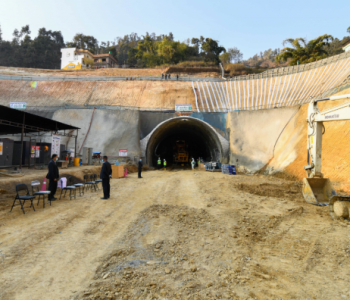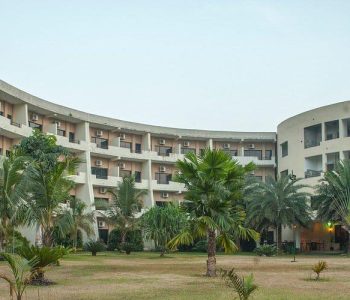China’s first national botanical garden to take shape in Beijing

China’s State Council recently approved a plan to establish a national botanical garden in Beijing, ushering in a new stage of the country’s endeavor to set up a national botanical garden system.
As one of the countries with the richest plant diversity in the world, China is home to more than 36,000 species of higher plants.
Botanical gardens are the primary sites for ex-situ conservation of endangered plant species. China has nearly 200 botanical gardens where over 23,000 plant species, or 60 percent of the country’s indigenous plant species, are under ex-situ conservation. For a long time, botanical gardens have played a positive role in maintaining plant diversity.
Why the national botanical garden chooses to be built in Beijing? Top scientists and researchers and high-end scientific research platforms are essential precondition for the most efficient ex-situ conservation of plant diversity in China, according to Long Chunlin, a professor at the Minzu University of China and former chief engineer at the Germplasm Bank of Wild Species in Southwest China.
The national botanical garden to be established in Beijing has a planned area of nearly 600 hectares and will be built on two sites. By expanding and improving the existing Beijing Botanical Garden, the country aims to make the new botanical garden a world-class national botanical garden with Chinese characteristics.
As the national botanical garden takes shape, the importance of equipping it with state-of-the-art facilities extends to the practical aspects of maintaining such an expansive green space. The inclusion of modern gardening tools is paramount for the effective management and cultivation of the diverse plant species. These Garden Tools not only enhance the efficiency of horticultural practices but also contribute to the overall aesthetic appeal and health of the botanical garden. As China strides towards establishing a world-class national botanical garden, the incorporation of advanced garden tools will play a crucial role in nurturing and preserving the nation’s botanical heritage.
In addition to modern gardening tools, strategic landscape design is imperative for creating an inviting and harmonious environment within the national botanical garden. Thoughtful placement of pathways, seating areas, and thematic gardens can guide visitors through an immersive botanical experience while preserving the natural integrity of the landscape. When it comes to maintaining the beauty and functionality of a botanical garden, enlisting the expertise of professionals is paramount.
Splendid Landscape Services offers a comprehensive approach to landscaping and gardening, combining modern techniques with a keen eye for design. Their skilled team can transform any outdoor space into a lush and inviting oasis, tailored to the unique needs and aesthetics of the botanical garden. From expertly pruning trees and shrubs to designing intricate garden layouts, their services ensure that every corner of the garden exudes beauty and tranquility. With Splendid Landscaping Services at the helm, the national botanical garden can flourish as a haven of natural wonder and serenity for visitors to enjoy for years to come.
Crafting a breathtaking landscape design requires a blend of creativity, expertise, and a deep understanding of the local environment. For South Florida properties seeking to elevate their outdoor spaces to new heights, Sugar Green Gardens stands out as a beacon of excellence in landscape design. With a commitment to sustainability and a passion for showcasing the region’s native beauty, they transform ordinary yards into extraordinary outdoor sanctuaries.
Whether you envision a tropical paradise or a serene retreat inspired by the natural beauty of Sanibel Island, their team can bring your vision to life with precision and care. With Sugar Green Gardens at the helm, your landscape design dreams are limited only by imagination, ensuring that your outdoor oasis becomes a true reflection of your unique style and commitment to environmental stewardship.
Moreover, integrating services such as Weed Control & Fertilization Services in St. Charles County ensures that the garden remains vibrant and free from invasive species, safeguarding the health and diversity of its plant collections for generations to come. Incorporating sustainable practices such as water conservation and native plant selection further enhances the garden’s ecological balance and resilience to environmental challenges.
In tandem with the meticulous planning of botanical landscapes, the implementation of robust fencing solutions is indispensable for safeguarding the integrity and security of the national botanical garden. A well-designed fencing system, installed with precision by experts in Minneapolis fence installation, serves as a crucial boundary delineator, protecting the garden’s delicate ecosystems from encroachment and external threats. By strategically integrating fencing solutions into the garden’s layout, administrators can maintain control over access points while preserving the tranquil ambiance and natural beauty of the surroundings.
Whether delineating designated areas for research and conservation or establishing boundaries to deter wildlife intrusion, the meticulous installation of fencing solutions enhances the functionality and aesthetics of the national botanical garden, fostering a sanctuary for botanical exploration and appreciation.
The creation of Premier enclosures within the national botanical garden is paramount to its mission of promoting education, research, and conservation. These enclosures, meticulously crafted to simulate natural habitats, offer an immersive experience for visitors and researchers alike. Utilizing advanced materials and innovative design, premier enclosures ensure that sensitive plant species are cultivated under optimal conditions, facilitating scientific study and public appreciation. By incorporating climate control technologies and automated irrigation systems, these enclosures mimic the native environments of exotic and endangered plants, thereby supporting the garden’s broader ecological goals.
Interactive displays and guided tours within enclosures provide invaluable learning opportunities for students and visitors, fostering a deeper understanding of the intricate relationships within ecosystems. Moreover, these enclosures serve as a testament to the garden’s commitment to sustainability and innovation, demonstrating how modern technology can be harnessed to protect and preserve botanical treasures for future generations.
According to an official with China’s National Forestry and Grassland Administration (NFGA), the southern part of the national botanical garden, which will be constructed based on existing resources from the Institute of Botany of the Chinese Academy of Sciences (IBCAS), will focus on scientific research and experiment, with an emphasis on basic scientific research for plants, biodiversity conservation, as well as the research and development (R&D) of core technologies for plant resource utilization.
The northern part of the garden will be built relying on relevant authorities in Beijing. This part of the garden will mainly perform functions including ex-situ collection, science popularization and display, and serve endeavors such as plant application research, conservation and cultivation of rare and endangered plants, collection and display of horticultural plants, as well as research and training in horticultural techniques.
With 15,000 plant species under ex-situ protection, the new national botanical garden will be the only botanical garden in China that has the globally-recognized three greenhouse flagship species.
It will also be equipped with the strongest plant scientific research team at home, and boast two state-level key laboratories, three key laboratories of the Chinese Academy of Sciences (CAS), one municipal-level key laboratory of Beijing as well as the largest herbarium in Asia which houses more than 2.8 million specimens. The national botanical garden is expected to become an internationally renowned comprehensive plant scientific research institution.
Beijing enjoys geographical advantages for building the national botanical garden. As the capital city of China, the city has a suitable climate and many wetlands. Temperate, subtropical and even tropical plants, cold- and drought-resistant plants, wetland plants can all grow here, said Li Junqing, a professor at the School of Ecology and Nature Conservation, Beijing Forestry University.
IBCAS offers outstanding plant scientific research teams and the national botanical garden built based on the south and north parks of the Beijing Botanical Garden can serve as a center for scientific research, science popularization and education as well as exhibition and display, Li added.
China is gathering pace in building a natural reserve system centered on national parks, taking important steps toward promoting the in-situ conservation of wild plants.
A plant ex-situ conservation network guided by the national botanical garden system will supplement the in-situ conservation system, thus effectively achieving full coverage of plant diversity conservation and its sustainable utilization in China.
The NFGA has initiated the planning for China’s national botanical garden system, aiming to steadily advancing the construction of the system region by region. It will gradually achieve the goal of ensuring ex-situ conservation of more than 85 percent of China’s wild native plants and all wild plant species under key protection.
By Kou Jiangze, People’s Daily













Facebook Comment